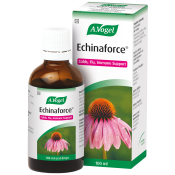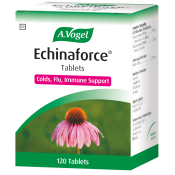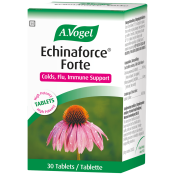Preparing for cold and flu season the natural way
Here is simple and easy to follow advice on how to get ahead of the cold and flu season.
What is the difference between a cold, ‘the flu’ and ‘COVID’?
They are respiratory illnesses that are caused by viruses. The difference lies in the type of viruses that cause them, and the symptoms they cause in the body.
‘The flu’ is caused by influenza viruses. There are four types of flu viruses including A, B, C and D. It is generally the influenza A and influenza B viruses that cause the seasonal flu outbreaks each year.
Colds are caused by other types of viruses. These are typically caused by adenoviruses, common cold coronaviruses, parainfluenza viruses and rhinoviruses.
The term ‘COVID’ is used to describe an infection with SARS-CoV-2 which is one of the more serious coronaviruses and responsible for the COVID-19 pandemic.
The cold, flu and COVID viruses infect the respiratory systems through the eyes, mouth and nose, and cause infections in the respiratory tract, and all the interleading passageways including the ears, lungs, nose, and throat.
Sometimes, a bacterial infection may result in similar symptoms or occur as a secondary infection following the initial viral phase.
When am I most likely to get a cold, the flu or COVID?
Colds, flus or COVID are respiratory illnesses, and they are acquired through the mucosal membranes in our eyes, lungs, mouths, and noses, and by being close to those who are already ill and infectious.
Colds and flu viruses tend to peak during the autumn and winter months; typically, between end-April to end-July in South Africa. Although we consider them to be seasonal, cold and flu outbreaks can happen any time of the year.
How do I prepare for cold and flu season?
The short answer is that prevention is always better than cure. Good health is an ongoing journey and should be embraced holistically. It isn’t somewhere that we suddenly arrive. What we mean is that good health needs to be considered consistently through the choices that we make every day, in every way.
During winter, we tend to hibernate indoors, and our wholesome habits fall by the wayside. It’s best to get into a healthy routine before the colder months arrive.
Strengthen your immune system by staying in balance and try to make sure that you:
- Eat the healthiest, most balanced diet possible by increasing the amount of whole foods such as fresh fruit and vegetables as well as raw nuts and seeds that you eat.
- Avoid eating refined carbohydrates such as sugar, sweets and chips, and processed foods.
- Limit alcohol, caffeine and fizzy drink intake, and drink at least two litres of fresh water throughout the day.
- Exercise moderately for at least half an hour three times a week and take the stairs and not the escalator whenever possible.
- Sleep six to eight hours a night.
- Get enough fresh air and sunshine.
- Manage stress and anxiety levels.
- Wash your hands regularly.
How do I tell if I have a cold or the flu?
Flu symptoms tend to be more severe than cold symptoms. They appear more suddenly and include higher fevers. The flu can be debilitating. If left untreated, it may lead to something more serious like pneumonia. Sometimes diarrhoea or vomiting are also symptoms of the flu. Dry coughs, chills, fatigue, high fevers, headaches, muscle pain and aching joints, sore throat and foggy brain are common symptoms of the flu.
Colds tend to develop more gradually, and typically start with a sore throat which then spreads to the nasal passages leading to congestion. Sometimes earache might develop before the infection spreads to the lungs. Milder fevers, wetter and chestier coughs, sneezing, and runny noses are typical symptoms of a cold. Dark mucus tends to develop as the infection develops.
The quickest way to distinguish between the two is to take your temperature. A cold very rarely results in a temperature over 38.5 degrees Celsius.
When do I stop being contagious?
You are most contagious within the first three-to-four days after displaying symptoms. If you are recovering that means that your body is producing antibodies and is fighting the infection.
It is better not to be around the vulnerable such as people with compromised or immature immune systems during this time such as the very young and elderly. If you are still coughing and sneezing, you are spreading the virus. Babies and children are still building up antibodies and might be contagious a little longer.
What are the typical complications of a cold and the flu?
Complications are typically secondary bacterial infections which occur shortly after the initial viral illness.
A typical complication is acute bronchitis. This is inflammation of the connecting tubes of the lungs. They get swollen and inflamed because of a bacterial or viral infection. Most of the time, it is caused by a secondary bacterial infection.
As a result, these tubes produce a lot of mucus as they try to get rid of the invaders. You tend to have a deep and persistent rattling cough as well as a fever. Fatigue, mild headaches, a tight chest, and difficulty breathing are also common symptoms.
Pneumonia is another typical complication. It can be deadly, especially in the immuno-compromised, vulnerable and those with chronic health conditions. It can be both viral and bacterial. It is most commonly a secondary infection caused by the Streptococcus pneumoniae (pneumococcus), and Mycoplasma pneumoniae in children which are bacterial infections. This means that they can be treated with antibiotics.
Other common complications include secondary ear infections (otitis media) and sinusitis and tonsillitis.
What is the normal duration of colds and flu?
A cold tends to last for about a week, if not less, in a normal healthy person. Head colds are sometimes mistaken for sinusitis or a sinus infection.
Flu symptoms last anywhere between three to five days but can last up to about eight days although you may take longer to bounce back to full strength.
If the symptoms continue longer than that, it might mean that a secondary bacterial infection has developed.
How can I prevent colds and flus naturally?
Consider A.Vogel Echinaforce. It’s been around for more than 60 years. It is a unique formulation made from freshly harvested organically grown Echinacea purpurea. Swiss naturopath Alfred Vogel concluded that using fresh plant extracts would deliver greater quantities of active ingredients, like alkylamides, than dried plant extracts.
Taken daily, A.Vogel Echinaforce helps strengthen the immune system, preventing cold and flu infections. It is safe for long-term use and may be used during pregnancy and breastfeeding under a medical professional’s supervision.
It is advocated as a preventative solution and a treatment. So should you get sick, used at the treatment dose, A.Vogel Echinaforce helps to reduce the severity and duration of symptoms, as well as helping to prevent secondary infections and complications such as tonsilitis, sinusitis, bronchitis, and pneumonia.
A.Vogel Echinaforce is available as drops, tablets, as a throat spray, and as chewable tablets for children.
- A.Vogel Echinaforce Drops: The recommended preventative dose is 20 drops in a glass of water up to three times daily. For children 4 – 12 years, 10 drops up to three times daily. For children 1 – 4, one drop per year of age, up to three times daily.
- A.Vogel Echinaforce Tablets: The recommended preventative dose for adults and children over 12 years old is three tablets up to twice daily. For children 6 - 12 years old it is one tablet up to three times daily as split doses.
- A.Vogel Echinaforce Forte Tablets: These are a three times stronger variant of A.Vogel Echinaforce and ideal for those who need a bit more support. The recommended preventative dosage for adults and children over 12 years is one tablet up to twice daily. For children 6 – 12 years old, one table once a day.
- A.Vogel Echinaforce Junior Tablets: These are specially formulated for children, with a pleasant, orange-flavoured, tooth-friendly chewable tablet that's easy to take. It is recommended that children aged 2 – 4 years chew one tablet up to twice daily. For children aged 4 – 12 years, the preventative dose is one tablet up to three times daily, and adults and children over 12 years can take two tablets up to three times daily.
I have a cold or the flu, and would like to treat it naturally, what do you recommend?
- Increase your intake of Vogel Echinaforce to acute dosages immediately. Once you start to feel better, reduce the dosages to normal.
- Identify whether you have a cold or the flu. Specifically look at what symptoms you would like to treat before introducing one of these recommended remedies. Only take them when you are experiencing symptoms. Stop using them when you are feeling better.
- A.Vogel Mucoforce: This is a homeopathic medicine for the supportive treatment of excessive mucus and congestion of the upper respiratory tract. The ingredients address symptoms such as sneezing, runny, or blocked nose, postnasal drip, nasal congestion, hoarseness, and tearing eyes.
- A.Vogel Cough Formula: This is a homeopathic medicine for the supportive treatment of coughs. Ingredients address dry, irritating, spasmodic coughing as well as the build-up of phlegm associated with wet coughs by their expectorant action.
- A.Vogel Glands Formula: A homeopathic medicine supporting healthy glands and lymphatic tissue. The ingredients specifically address enlarged, swollen, or tender glands, and glandular tissue occurring because of infections.
- A.Vogel Influaforce: These flu drops are a homoeopathic medicine for the supportive treatment of mild viral respiratory infections, and associated signs and symptoms. The ingredients address mild headache, feverish symptoms, chills, weakness, body, and muscle pain as well as phlegm of the respiratory tract.
- A.Vogel Santasapina Bon Bons: Itchy and dry throats can be quite irritating. A.Vogel Santasapina Bon Bons are tasty, soothe your throat and relieve coughs. These unique lozenges have fresh spruce shoots, honey, and peppermint.
- A.Vogel Sinuforce: A homeopathic medicine for the supportive treatment of nasal congestion and mucus. The ingredients address symptoms associated with congestion of the nasal passages such as headache, postnasal drip, runny nose, and mucus build-up. Also available in tablet form.
- A.Vogel Echinaforce Sore Throat Spray: An effective spray combining Echinacea purpurea (Echinaforce) and sage that treats pain, inflammation and infections of the mouth and throat, such as pharyngitis, tonsillitis, sore throats, and hoarseness associated with coughs, colds, and flu.
- You need to drink about two and a half litres of fresh water consistently throughout the day. This is important when you’re sick because it helps thin mucus allowing your sinuses to drain better. Increase your intake of fresh fruit and vegetables. Get enough bed rest and make sure that your room is well ventilated.
How do I prevent the possibility of getting a secondary infection?
Getting a cold or the flu compromises and weakens the immune system. Secondary infections from colds and flu are often bacterial infections that develop during, or right after, the cold or flu.
Common secondary infections are otitis (ear infections), tonsilitis, sinusitis or bronchitis and because they are bacterial infections, they can often require antibiotic treatment. Another benefit of using A.Vogel Echinaforce at the treatment dose to help support the immune system and treat the cold or flu symptoms, is that it can also help to prevent those secondary bacterial infections from developing.
Should I go to the doctor straight away?
Most colds and flu can be treated at home. However, if you have been persistently ill for ten days with a fever of 38.5 degrees Celsius, you may require medical assistance.
This article also appeared on Living Naturally.
References:
- Influenza (2022) NICD. Available at: https://www.nicd.ac.za/diseases-a-z-index/influenza
- Influenza (seasonal) (no date) World Health Organization. World Health Organization. Available at: https://www.who.int/news-room/fact-sheets/detail/influenza-(seasonal)
- National Institute for Communicable Diseases (2023) South African Government. Available at: https://www.gov.za/national-institute-communicable-diseases
- About flu (2022) Centers for Disease Control and Prevention. Centers for Disease Control and Prevention. Available at: https://www.cdc.gov/flu/about/index.html
- Bronchitis: Definition, causes, symptoms, and treatment (2019) Medical News Today. MediLexicon International. Available at: https://www.medicalnewstoday.com/articles/8888#treatment



